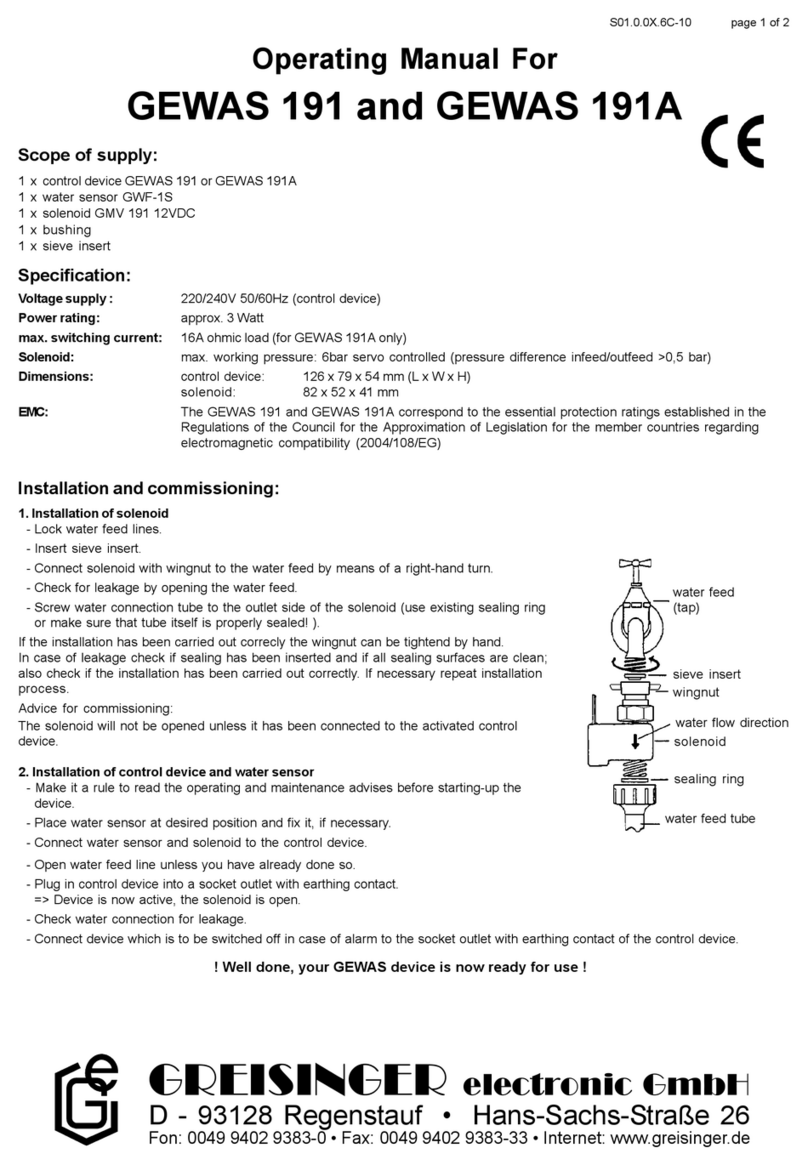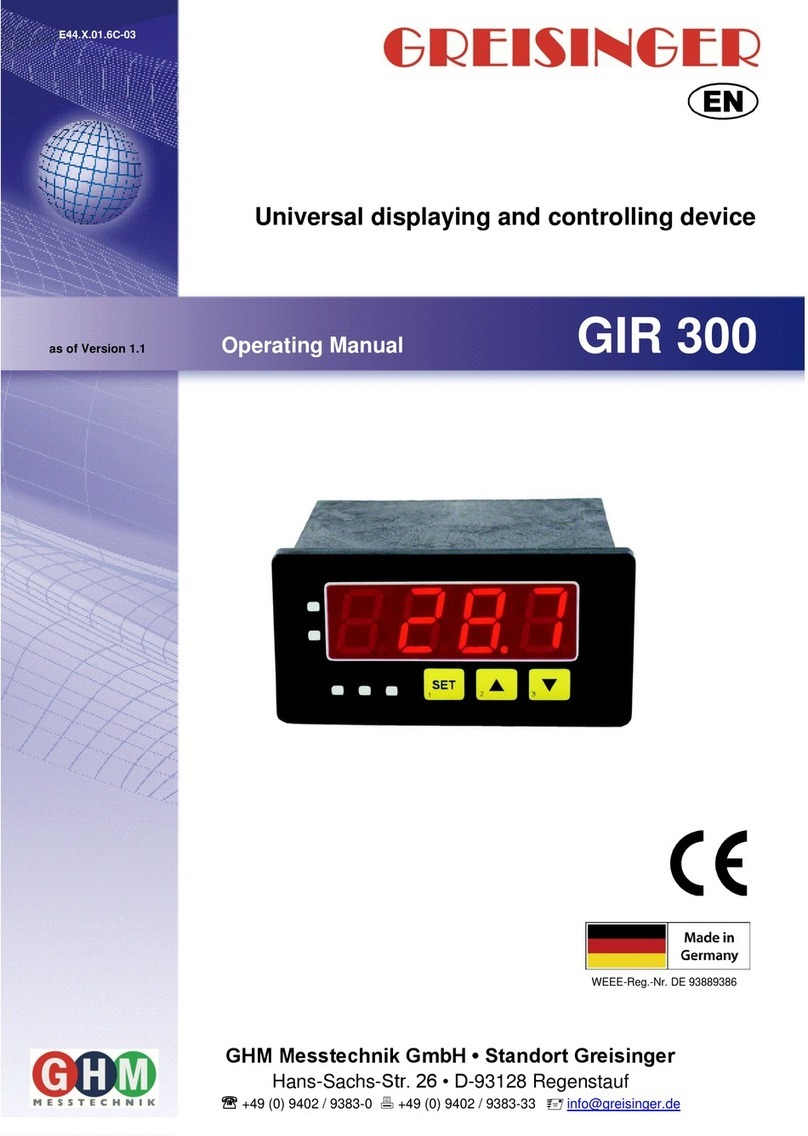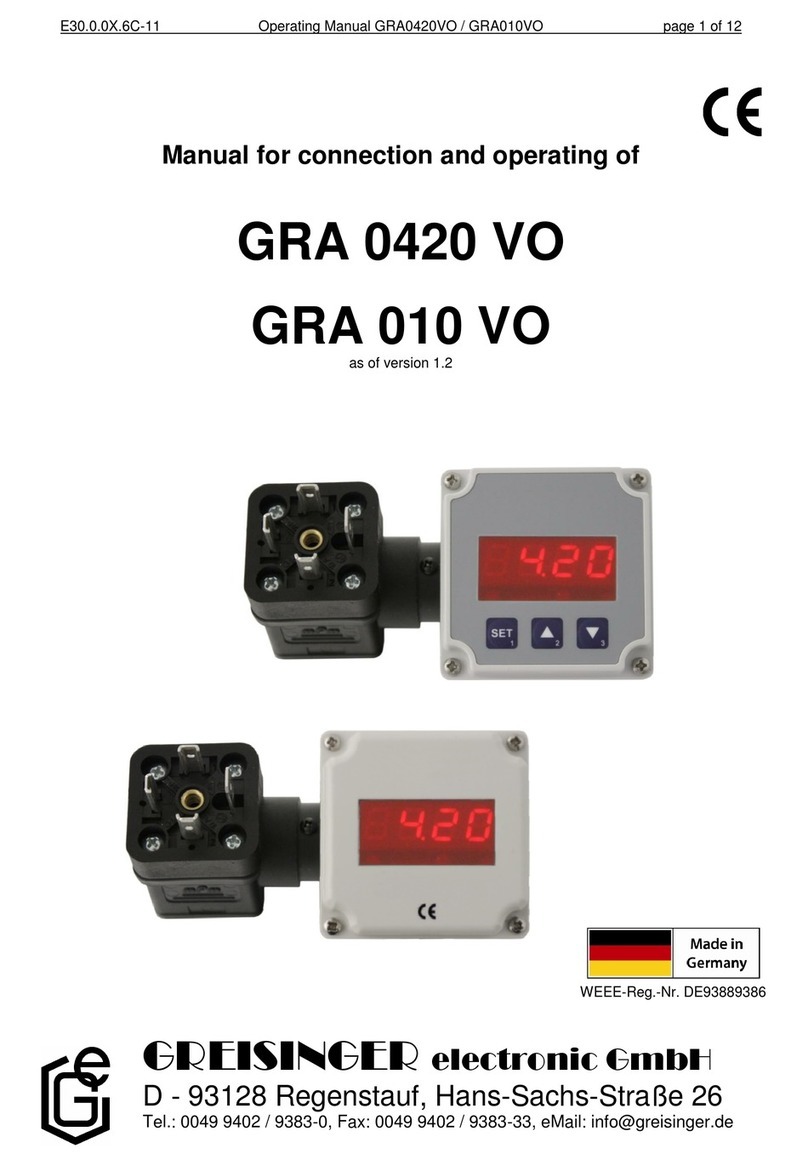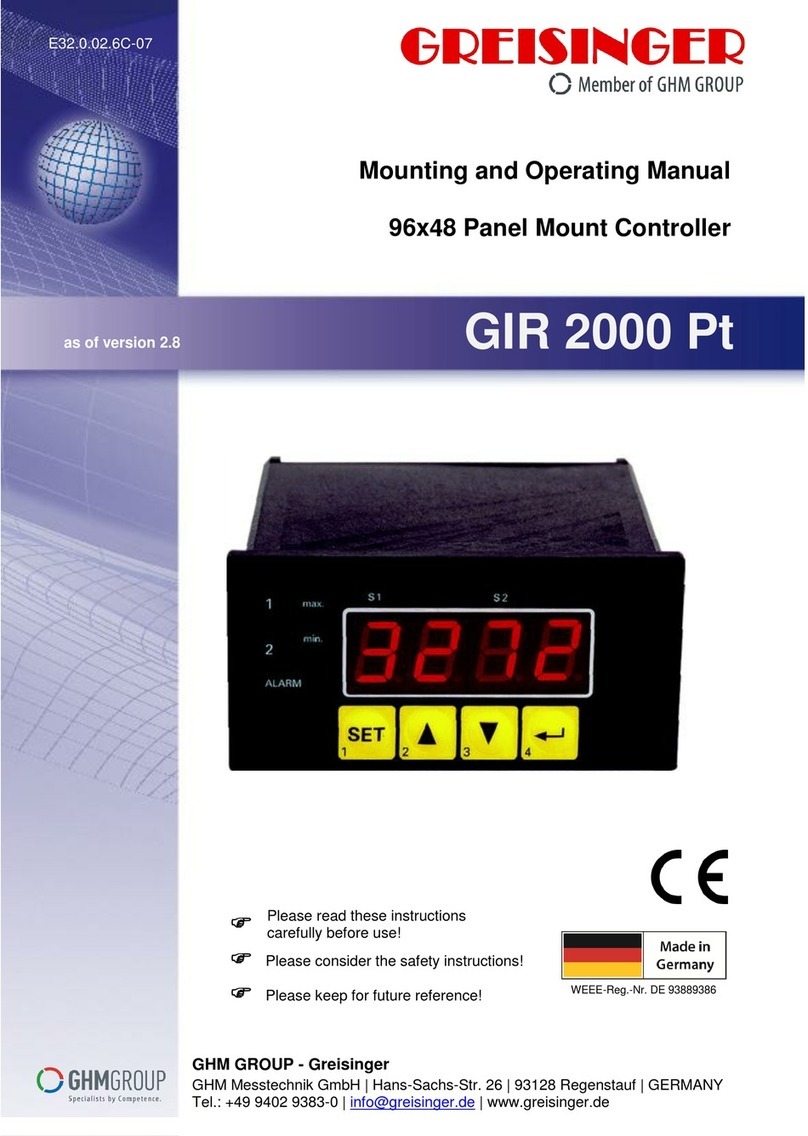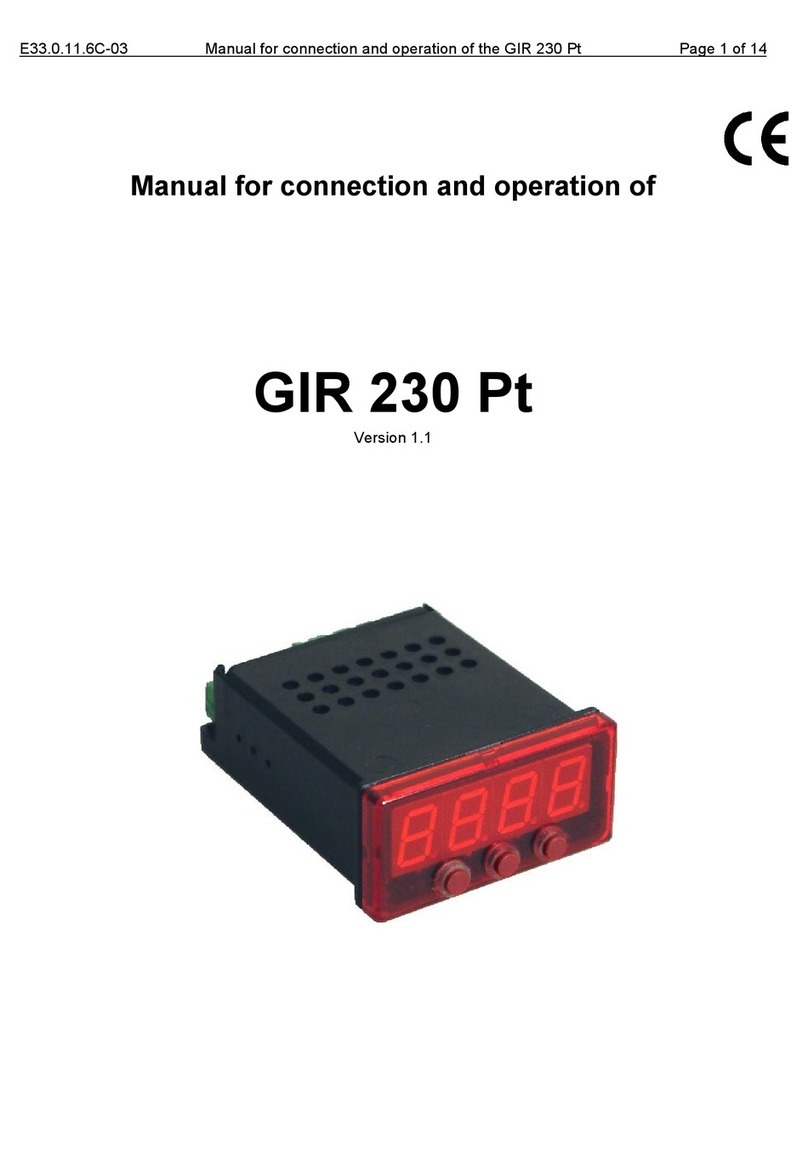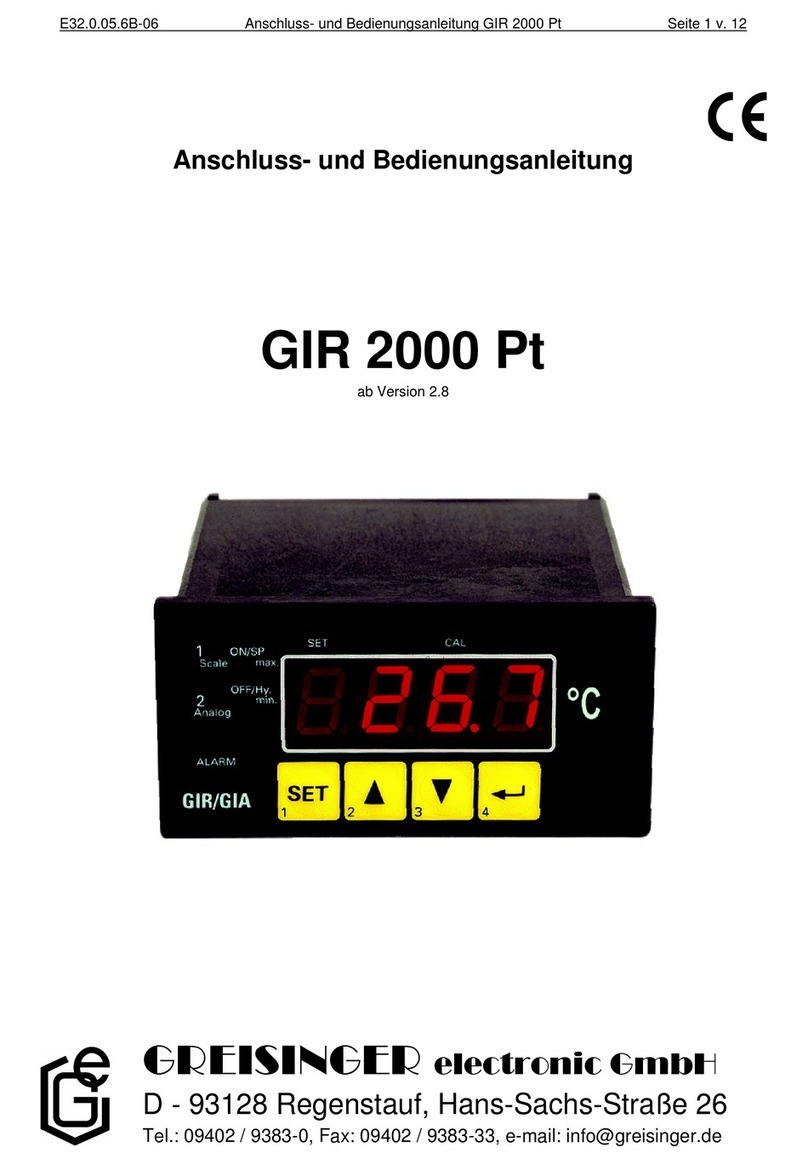
E35.0.01.6C-03 Manual for connection and operation of the EB 3000 page 9 of 19
6.2. How to display or reset the min-/max-values
You can call and display the min-/max-values of the EASYBUS-measurement channels by using EB3000.
Hint: The EB3000 can only readout the respective min-/max-values. The values stored in the
respective sensor modules will not be saved in the EB3000.
If a min-/max-value is shown, LED „min“ resp. „max“ illuminates.
Key-operating:
- Key 1shortly pushed: display changes between actual value, min-value and max-value
- Key 1pushed >1 sec.: if cyclic display = off: clear min-/max-values of the displayed measurement
channel.
if cyclic display = on: clear min-/max-values of all activated measurement
channels.
After 30 sec. the display of the min-/max-values automatically finish and the actual value is shown again.
6.3. Setting of switching points
The switching-on-points and switching-off-points of the outputs can be called and changed via the input
keys. Therefore only switching outputs with an allocated channel are shown. If no channel was allocated to
the switching output a call of function ‚setting of switching points‘ is not possible.
Please note: If no key is pushed by inputing a value longer than 10 sec., it will be changed to the parametric
display again, after another 30 sec. the switching point setting of the device will be stopped. Not stored modifi-
cations will not be saved and are lost!
Hint: A call is only possible, if the display of the device shows the actual value
-Push key 1and 2for >1 second
In the main display “X.on“ resp. “X.off “ appears.
(X = number of the switching output, on = switching-on-point, off = switching-off-point).
In the auxiliary display the text of the allocated channel appears.
-Use key 1 to select the adjustable switching parameter.
-Push key 2or 3.
In the main display the currently adjusted switching point appears.
-Use key 2and 3to set the new desired value, whereas this output shall be switched on or off.
-Use key 1to acknowledge the adjusted switching point. The new switching point will be saved and in
the main display “X.on“ resp. “X.off “ appears again.
With key 4you can cancel the setting at any time, the made modification is resetted and in the main
display „X.on“ resp. “X.off “ appears again.
-Use key 1to select the next adjustable switching parameter and set as described.
With key 4you can cancel/finish the setting of the switching point at any time, and the actual measure-
ment value is displayed again.
Hint: The setting of the switching points can also be performed comfortable for each channel with software
„EASYBUS-Configurator“ (see chapter 8 – appendix).
6.4. Setting of alarm limits
If the connected EASYBUS-measurement channel supports an alarm function the min-/max alarm limits and
the alarm delay can be called and changed via the input keys.
Please note: If no key is pushed by inputing a value longer than 10 sec., it will be changed to the parametric
display again, after another 30 sec. the switching point setting of the device will be stopped. Not stored modifi-
cations will not be saved and are lost!
Hint: Here you can call and change the alarm limits of the
EASY
BUS
-measurement channel.
The alarm limits stored in the
EASY
BUS
-sensor modules will not be saved in the EB3000.
The settings of the alarm limits will only be carried out for the currently displayed measurement channel.
TIPP: For setting the alarm limits we suggested to switch-off the cyclic display for a „manually“ se-
lection of the setting channel.
